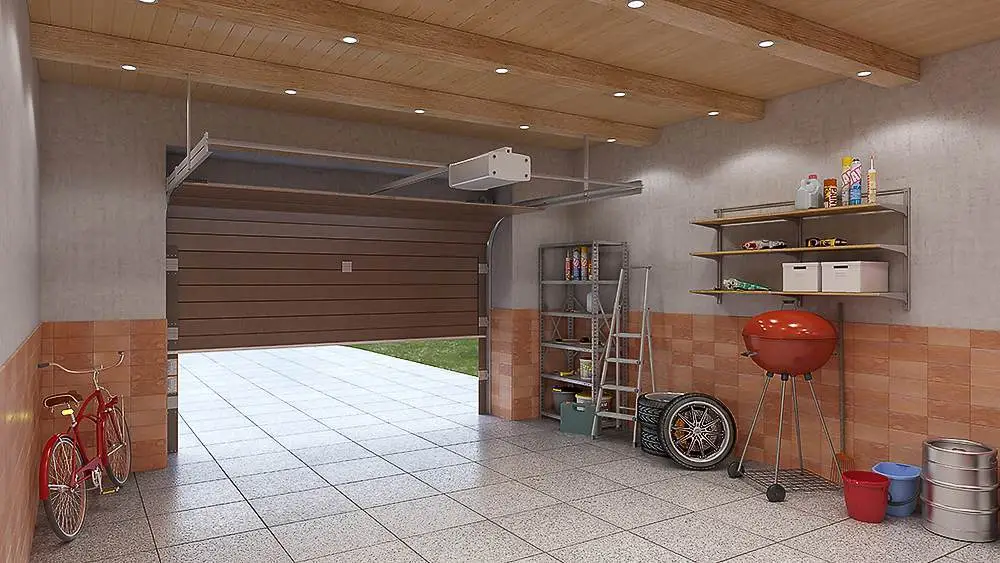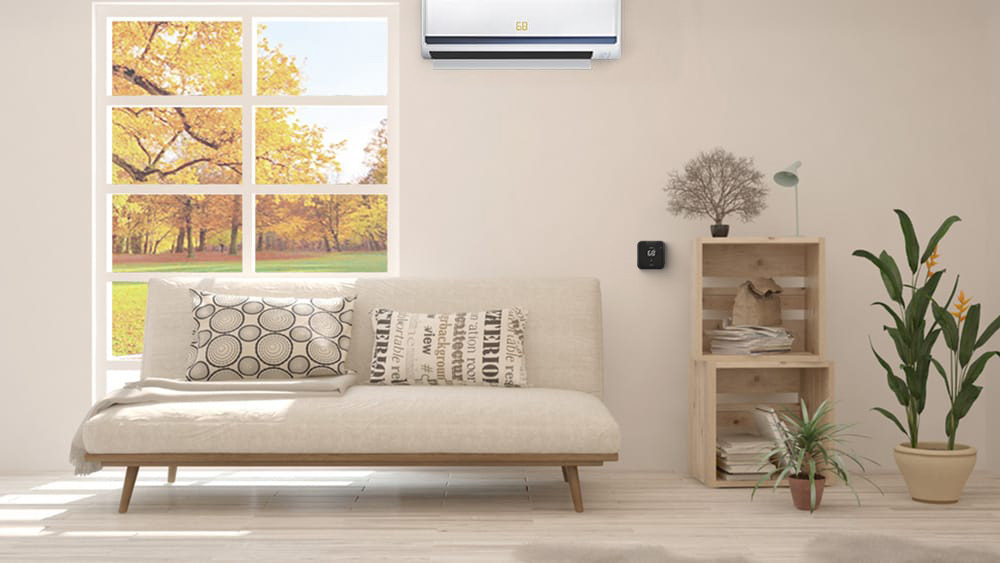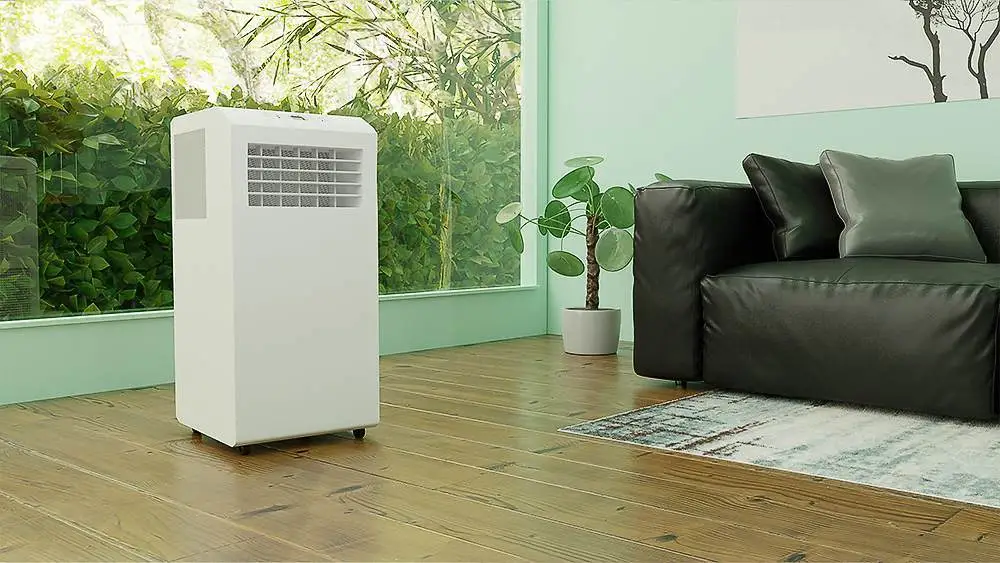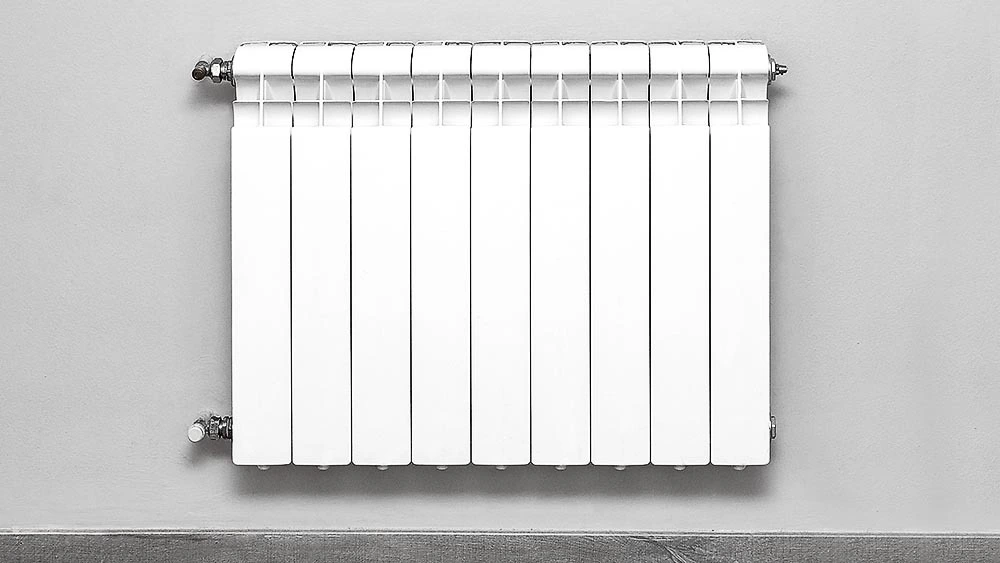
Key Takeaways
- For effective garage heating, choose from options like mini-split heat pumps, space heaters, or radiant heating.
- Before installing a heating system, ensure your garage is well-insulated.
- When choosing the best heater for a garage, consider garage size, power, maintenance, safety features, and noise level.
If you use your garage as a workshop or a hobby space, you know how cold it can get during winter months, making it a struggle to complete your projects.
Garage spaces often lack insulation and heating systems, so they are not ideal for extreme weather conditions without making specific changes. Garage heaters are an effective solution whether you need a quick fix for weekend projects or consistent warmth for extended use. While they make your space toasty, you should also consider insulating your garage to prevent cold drafts from affecting your maintained indoor temperature.
There are various heating systems available out there, depending on what you need. For example, if you go to your garage only for weekend projects and don’t need to bring the temperature up significantly, you can consider smaller plug-in heaters. But if you want to use it for longer durations, you will need a powerful heater to maintain a comfortable garage temperature at all times. You may also want to, let’s say, only use heating at the lowest power to prevent freezing temperatures and protect pipes.
Here is a detailed guide on how to heat your garage using different types of heating units and turn it into a cozy, functional space.
- 1. Install Garage Insulation
- 2. Ductless Mini-Split Heat Pump
- 3. Window Heat Pump
- 4. Portable Heat Pump
- 5. Radiant Heating
- 6. Electric Ceiling Panels
- 7. Space Heater
- 8. Wall-Mounted Electric Heater
- 9. Convection Heater
- 10. Forced Air Heater
- 11. Infrared Heater
- 12. Propane Heater
- 13. Wood Stove
- Heating Method to Avoid
- What to Consider When Selecting a Heating System for Your Garage
- Eliminate Garage Temperature Woes
1. Install Garage Insulation
Before installing a heating system in your garage, ensure it is well-insulated. Insulation helps keep warm air inside and prevents air exchange. Without insulation, your heating unit will have to work hard to achieve your desired temperature, resulting in increased bills.
An attached and well-insulated garage can also help provide a better thermal boundary for your home, restricting cold or hot air exchange from hallways or rooms above or next to it.
Start by insulating your garage doors and walls with rigid foam insulation. Also, fill in any cracks and gaps with caulking and apply weatherstripping on door jambs and between the window frame and sash. You can also cover the window with film insulation to further minimize heat loss. Moreover, use fiberglass insulation to cover the ceiling and floor of your garage. Rubber rugs or mats can be added for extra floor insulation. Finally, spray foam insulation does an excellent job of filling any nooks and crannies.
Have a look at this guide on how to insulate your garage.
2. Ductless Mini-Split Heat Pump

If you’re wondering how to keep your garage warm during winter, or if you prefer to keep it warm as a relaxing place, the best way to heat a garage is to install a ductless mini-split heat pump. This pump provides unlimited warmth. Mini-split installation does not involve ductwork and can be an easy DIY project if you are a techie.
Mini-split heat pumps have an indoor unit connected to an outdoor unit via a pipe. In the colder months, the outdoor unit extracts heat from the air outside and releases it indoors via the air handler.
Ductless units are highly efficient—they deliver conditioned air straight to the focused area, minimizing heat loss. They are also perfect for preventing pipes from freezing. Some mini-split heat pumps come with a freeze protection mode, in which the unit blows out hot air while consuming minimum power to prevent freezing temperatures.
You can also make your heat pump smart by connecting it with a smart mini-split thermostat like the Cielo Breez Max. It allows you to fully automate your garage climate with features like geofencing, scheduling, and Comfy Max. Moreover, you can control your heat pump through the Cielo Home app even if you’re away.
|
Pros |
Cons |
|
|
|
|
|
|
Your best choice to make any mini-split, window,
or portable AC smart. Enhance your comfort and savings.
3. Window Heat Pump

Window heat pumps are self-contained units designed to heat and cool a single space. They are inexpensive, so you can use them to heat your garage cheaply. Window ACs are also the easiest ductless units to install. They produce little to no noise, and with regular maintenance, they will last a long time.
These window heat pumps can also be made smart thanks to window AC thermostats, which use intelligent triggers to automate your ideal temperature and humidity levels.
If your garage doesn’t have windows, you can use a through-the-wall air conditioner. It is similar to the window unit; the only difference is that the through-the-wall heating system is designed to sit in a wall instead of a window.
| Pros | Cons |
|
|
|
|
|
Related: How to Hide Window Air Conditioner: 15 Genius Ways to Disguise Your Unsightly AC Unit
4. Portable Heat Pump

With a portable heat pump, you can easily maintain your preferred temperature settings in your garage.
A portable heat pump works just like any other heat pump, with the added benefit of portability. This heating system does not require professional installation; just route the exhaust hose out of the window or a hole in the wall, then plug in the switch and start heating.
A portable heat pump has a sleek look as all the components are fitted inside one container. It consumes less energy and is much safer than a space heater.
One disadvantage of using a portable unit is that it produces a lot of noise and may not be suitable for a relaxing environment if that’s what you’re aiming for.
| Pros | Cons |
|
|
|
|
5. Radiant Heating
Do you want an even blanket of heat without the risk of circulating indoor air pollutants? Then, your answer is radiant heat for the garage!
These heating systems work by transferring heat directly to surfaces like walls, floors, or ceilings, primarily through radiation and convection. There are many types of radiators: baseboard radiators, cast-iron radiators, and radiant walls, but the most common type is radiant floor heating, which uses infrared radiation to heat your space using resistive wires or hot water tubes running under the floor.
The most significant advantage of radiant heating is that it provides uniform and consistent heating, reducing hot and cold spots. Also, unlike forced air systems, there is no blowing air, which means fewer dust particles are circulating.
Related: Radiant Heat Vs. Forced Air – Which Is the Better Option?
One drawback of this system is that it is only for those who are building a new garage or considering replacing the existing floor. Radiant heating is installed before the concrete is poured and is quite challenging to retrofit.
| Pros | Cons |
|
|
|
|
6. Electric Ceiling Panels
If you’re looking for good electric heaters for your garage, consider installing electric ceiling panels. These slim panels are embedded in the ceiling and can be used if you have converted your garage into an art studio or a hangout place and don’t want your heating system to clash with the décor.
Electric panels are an energy-efficient option that can quickly warm up your space. They can also be used as your primary source of heat without having to use a supplemental system.
The disadvantage of having a ceiling heater is uneven heating. You may feel like the room has not been appropriately heated at a lower level. Further, the maintenance of ceiling panels can get costly.
| Pros | Cons |
|
|
|
|
|
7. Space Heater
If you’re wondering how to heat a garage cheaply, then a space heater is your solution. It is portable and can be moved around and placed nearby when working or reading a book, for instance.
Space heaters operate on electricity, propane, kerosene, or natural gas. If your garage is piped for gas, you can use direct vent space heaters that use natural gas. Vented portable heaters for small spaces are designed to be positioned near an exterior wall, enabling the flue gas vent to be routed through the ceiling or directly out of the wall.
Electric space heaters, on the other hand, either work by convection, which circulates air in the room, or by radiant heating, which emits infrared radiation.
If accidentally knocked over, space heaters pose a fire hazard, especially if you are storing chemicals or any hazardous material nearby. Moreover, unvented kerosene and propane space heaters can boost the release of deadly carbon monoxide gas.
Note: When choosing a space heater for garage, consider safety options such as a tip-over safety switch, overheating protection, and a cool-to-touch feature.
| Pros | Cons |
|
|
|
|
|
|
8. Wall-Mounted Electric Heater

A wall-mounted electric heater is a great way to heat your small garage. It is designed to save floor space without affecting your comfort. These heaters are easy to install; you just plug them into the power outlet and can start using them right away.
Wall-mounted heaters are a safe garage heater option to use, especially with kids and pets, as you don’t have to worry about accidentally knocking them over and causing a fire. They rarely require maintenance and are eco-friendly as they do not emit any gases.
| Pros | Cons |
|
|
|
|
|
9. Convection Heater
Another option for heating your garage is a convection heater. It takes cool air and puts out warm air using natural convection currents. Powered by electricity, gas, or propane, convection heaters uniformly heat the area by distributing the warm air evenly.
The disadvantage of convection heaters is the lack of filters, resulting in dust and allergen accumulation in your garage space. Also, these heaters are not suitable for large rooms.
| Pros | Cons |
|
|
|
|
10. Forced Air Heater
A forced-air heater is a cost-effective option for heating a garage. These heaters work by blasting hot air throughout the space, providing quick warmth. Some models can be professionally installed to connect with your home’s gas or propane supply. However, they may not be ideal for garages where dust or debris is a concern, as the airflow can stir up particles, making them less suitable for activities like woodworking or painting.
|
Pros |
Cons |
|
|
|
|
11. Infrared Heater
Infrared heaters work by warming nearby objects through infrared radiation. Unlike forced systems, they do not dry out the air at all, as they do not move air around.
An infrared heater starts working instantly the second you turn it on, but it will also stop radiating heat when turned off. They also consume less electricity and should usually require no more than 1500 watts of power.
They produce minimal sound and are cool to touch, making them a perfect option if your kids or pets are going to hang out in the garage. IR heaters also work effectively when raising the ambient temperature would otherwise be difficult.
| Pros | Cons |
|
|
|
|
|
|
|
12. Propane Heater
If you are looking for instant warmth in your garage space, a propane heater is an easy-to-use and affordable option. This heating unit can quickly heat up a medium to large area using liquid propane as fuel. It is a highly efficient system, more efficient than an oil furnace, and usually qualifies for rebates and incentives. Most modern models even boast 99% efficiency.
Propane heaters are portable, unlike electric and natural gas heaters. However, not all propane heaters are portable, as their electrical system requires plugging into a power source.
A propane heater boosts the air temperature up to 140F, perfect for toasting your garage on freezing cold evenings.
The downside of this heater is that you have to keep a constant eye on it for safety reasons, and you can’t leave it unattended. Go with the one that comes with a tip-over switch that protects you from the risk of fire if the heater falls over. Some models also come with an oxygen depletion sensor that automatically turns off the unit when the oxygen level in the vicinity drops.
| Pros | Cons |
|
|
|
|
|
13. Wood Stove
A wood-burning stove provides slow, steady heating, which is a good choice if you frequently work on day-long projects. If you have a fresh supply of wood readily available, a wood stove can be a cheap way to warm up your garage.
Safety considerations should be taken into account when installing a wood stove. A wood stove requires a connection to a chimney and must permanently be installed by a professional. In addition, the stove should be positioned on a non-flammable surface, preferably a concrete garage floor, and it must be located at a safe distance from flammable items. Plus, it should be vented outside to keep the smoke from backing up in your garage space.
A garage wood stove isn’t for you if you want a quick heating system. Another drawback is that it requires high maintenance, as you must load the wood daily and start the fire. Moreover, it demands frequent cleaning to avoid the buildup of harmful substances. A wood stove is also a fire hazard when improperly installed or when gas fumes from a leaking vehicle are present in the garage.
| Pros | Cons |
|
|
|
|
|
Heating Method to Avoid
While extending your HVAC system to your garage may seem like a possible heating solution, you should avoid it at all costs due to safety concerns. It is even illegal in most areas. Fumes and toxins from your garage can easily enter your home and prove to be a health hazard. They can also negatively impact your indoor air quality. Also, a system extension may not be able to pull off the extra load, which may lead to other issues.
What to Consider When Selecting a Heating System for Your Garage
When deciding on how to heat a garage, do take into account these important considerations:
1. Size of Your Garage
To assess your heating needs, you need to determine your garage size. If you have ample space and you get a unit that is not powerful enough to handle the load, it won’t heat up your garage. Similarly, a larger-than-required unit will overheat and affect your comfort.
Calculate the square footage of your garage and have a professional evaluate what heater size would be suitable. For electric heaters, a good rule is for every 10 watts of output; you can heat one square foot of space.
Also, check the amount of space you actually require. You may be using only half the portion while the other half is reserved for vehicles or storage items. You can use a smaller heater to provide adequate heat in this scenario.
Related: What Size Air Conditioner Do I Need?
2. Power of Heating Unit
Heat output is measured in BTUs, and you must check the heater’s wattage and BTU to see if it will sufficiently heat the entire space. Also, consider the garage heater’s voltage. If it’s a plug-in heater, you’ll need to ensure it won’t trip the power outlet.
3. Maintenance Needs
Maintenance is key if you want your garage heaters to function optimally and last longer. If you have little to no time, go for simple electric space heaters or portable heat pumps. Most durable heaters, however, will require extra maintenance, such as more cleaning and inspection.
4. Safety Features
Safety is a significant concern with garage heating. Therefore, you should look for safety features such as tip-over mechanisms and overheating protection to avoid mishaps. The tip-over mechanism shuts down the heater when it’s knocked over, and the overheating mode senses the rising temperature and shuts down the heater. Another essential feature is a cool-touch feature that mainly comes with wall-mounted and portable heaters, as they are set up in locations easily accessible to kids and pets.
Related: Home Heating Safety: 15 Top Fire Prevention Tips Every Homeowner Should Know
5. Smart Controls
If you want to control your garage temperature remotely using your phone, you should look for a ductless unit that can be paired with a smart mini-split thermostat. With smart climate control devices, you don’t have to micromanage your garage temperature on an hourly or daily basis, just set the schedule once, and that’s it! Setting up weekly schedules would also eliminate the need to go to your garage just to turn your heat pump on/off.
6. Portability of Heating Unit
Depending on your requirements, you can either go for a portable heating unit or a permanent solution.
You can move around your portable units, and they are easy to set up as they don’t require any installations. However, they take up floor space, and there’s a chance of accidentally tripping over their cords. You can also go for permanent types like radiant floor heating or ceiling panels.
7. Noise of Heater
Some garage heaters can be very noisy, so check out the specs before purchasing. If you prefer a quiet workspace, go for an electrical heating system. Also, check the decibel ratings and choose the one with a higher dB value.
Eliminate Garage Temperature Woes
When deciding how to heat a garage, you’ll find that combining the right solutions can transform it into a warm and functional space year-round. A mini-split heat pump paired with a smart thermostat offers precise temperature control, while radiant heating provides even warmth across the space. For added flexibility, portable options like space heaters or portable heat pumps are excellent choices. In extremely cold regions, combining heating systems can boost efficiency and maintain comfort. Remember, proper insulation is key to retaining heat and reducing energy consumption. Lastly, always prioritize safety by following installation and usage guidelines for your chosen heating system. With these strategies, you can create a cozy, energy-efficient heated garage that is perfect for your needs.








